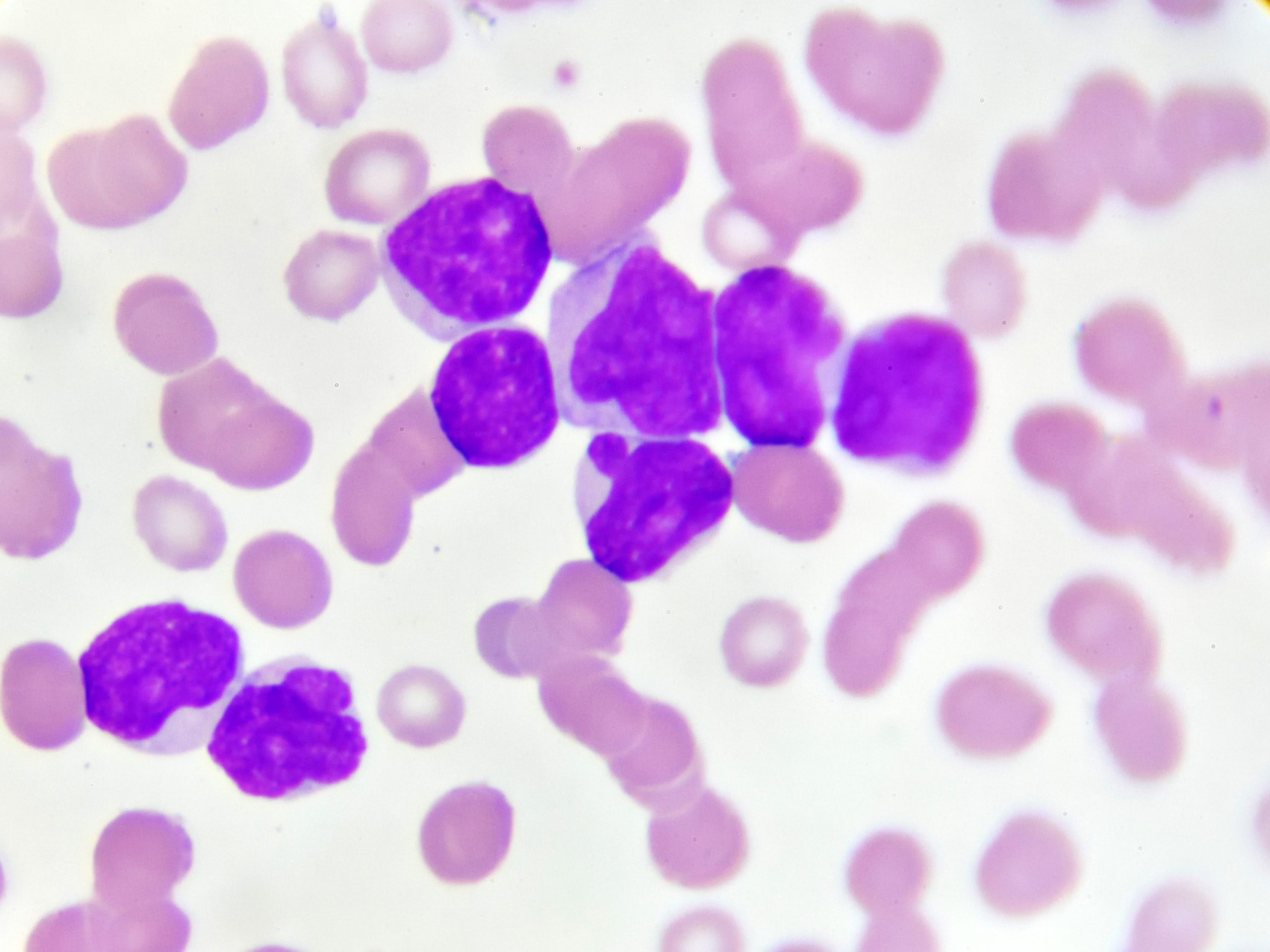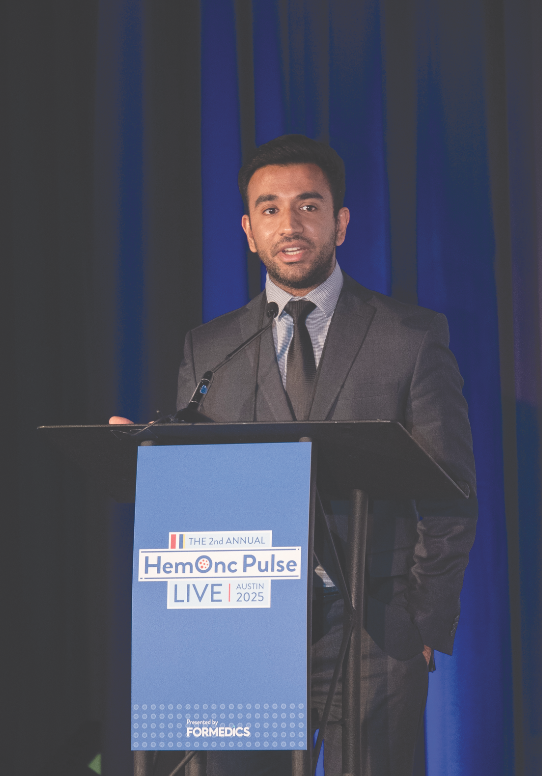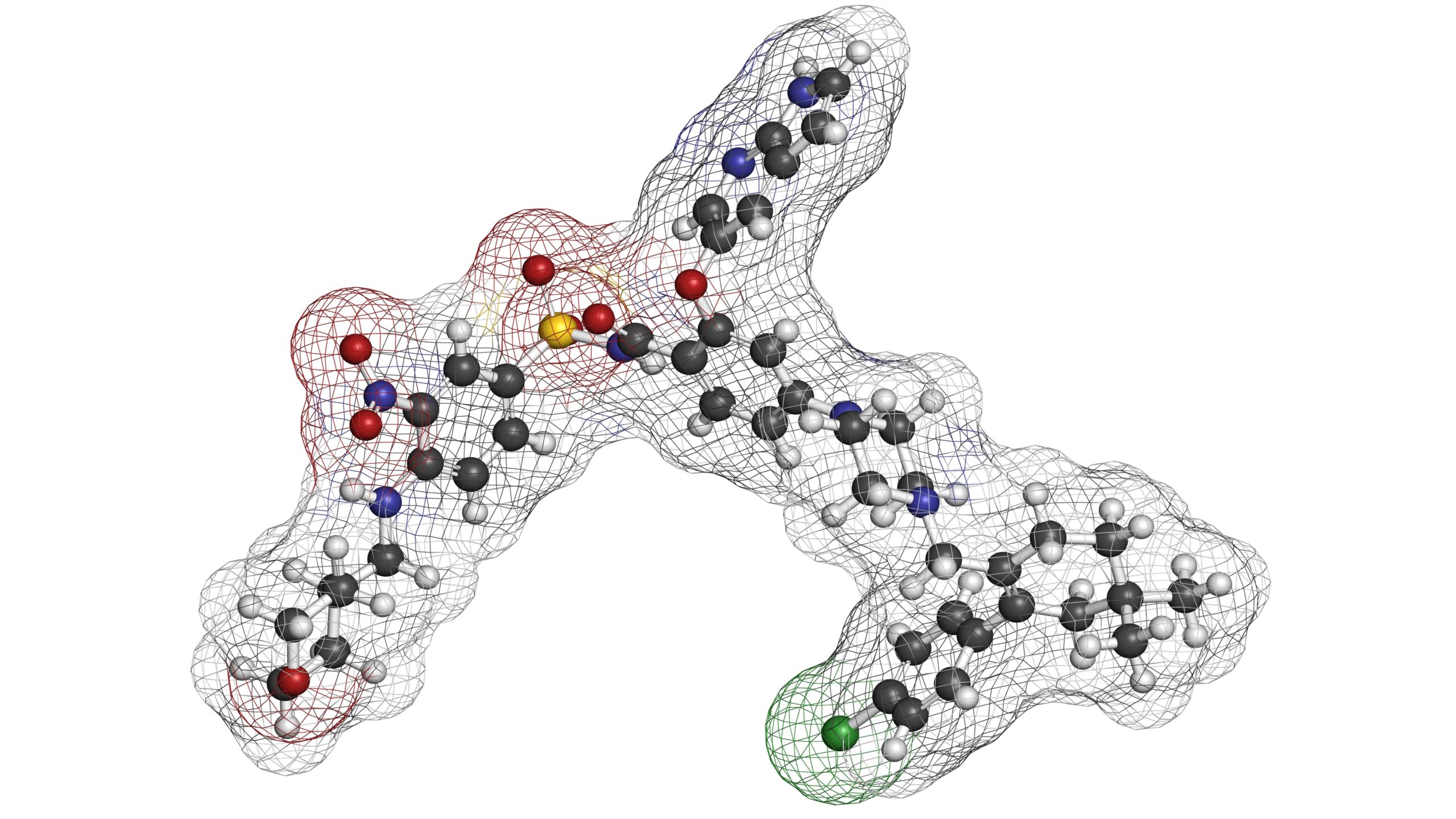
Take-aways:
- SEL24/MEN1703 has a manageable safety profile and induces clinical activity in patients with relapsed/refractory IDH-mutated acute myeloid leukemia.
- After treatment, the ORR was 13%, and one patient achieved a complete remission with partial hematologic recovery and underwent transplantation.
- The most common grade ≥3 adverse events were pneumonia, asthenia, and thrombocytopenia.
Preliminary results from a phase I/II study found that SEL24/MEN1703, the first-in-class oral dual PIM/FLT3 kinase inhibitor, has a manageable safety profile and induces clinical activity in patients with relapsed/refractory IDH-mutated acute myeloid leukemia (AML). The results were presented at the 2022 ASCO Annual Meeting.
The DIAMOND-01 trial determined a recommended dose of SEL24/MEN1703 125 mg orally once daily for 14 days during a 21-day cycle until disease progression or unacceptable toxicity.
As of April 21, 2022, 25 patients were enrolled in the expansion cohort; five patients remain on study, while the other 20 discontinued due to death (35% not related to adverse events), disease progression (25%), investigator’s decision (15%), and “other” (20%).
The median age was 68 years (range, 33-79 years). Most patients (n=18; 72%) had de novo AML, and 13 (52%) had intermediate cytogenetic risk. A majority of patients had received one or two lines of prior therapy (9%; n=36 for both). Patients had the following mutations: IDH2 (n=14), IDH1 (n=9), and IDH1/2 (n=1); one patient did not have mutation status available. Common concomitant mutations included NPM1 (n=7; 28%), FLT3/internal tandem duplication (n=4; 16%), and DNMT3A (n=4; 16%). Patients received SEL24/MEN1703 for a median of two cycles (range, 1-13 cycles).
Fifteen patients completed one or more treatment cycles, and among this cohort, the overall response rate was 13%. One patient with IDH2 and NPM1 mutations experienced a partial response during cycle four and achieved complete remission at cycle 13; this patient continues to receive treatment and has a duration of response (DOR) of 177 days. Another patient with IDH1 mutation achieved a complete remission with partial hematologic recovery at cycle three and underwent transplantation; this patient continues to receive treatment, with a DOR of 133 days.
Twenty-two patients were included in the safety population. The most common any-grade treatment-related adverse events were asthenia (n=8) and nausea (n=7). The most common grade ≥3 adverse events were pneumonia (n=6), asthenia (n=4), and thrombocytopenia (n=3), and serious adverse events included pneumonia (n=6) and sepsis/septic shock (n=2). Differentiation syndrome was not reported. Three patients required dose interruptions due to drug-induced liver injury, hyponatremia, and asthenia, but no patients required SEL24/MEN1703 discontinuations or experienced death due to treatment-related adverse events.
“SEL24/MEN1703 may be a feasible therapy in this difficult-to-treat population of patients with [relapsed/refractory] AML who harbor IDH mutations,” the authors concluded.
Reference
Martinelli G, Santoro A, Gambacorti-Passerini C, et al. Phase 1/2 study of SEL24/MEN1703, a first-in-class dual PIM/FLT3 kinase inhibitor, in patients with IDH1/2-mutated acute myeloid leukemia: The DIAMOND-01 trial. Abstract #7024. Presented at the 2022 American Society of Clinical Oncology Annual Meeting, June 3-7, 2022.






 © 2025 Mashup Media, LLC, a Formedics Property. All Rights Reserved.
© 2025 Mashup Media, LLC, a Formedics Property. All Rights Reserved.